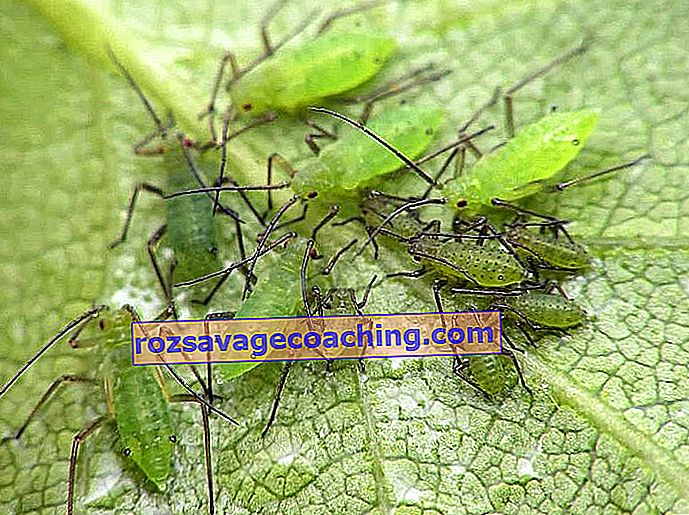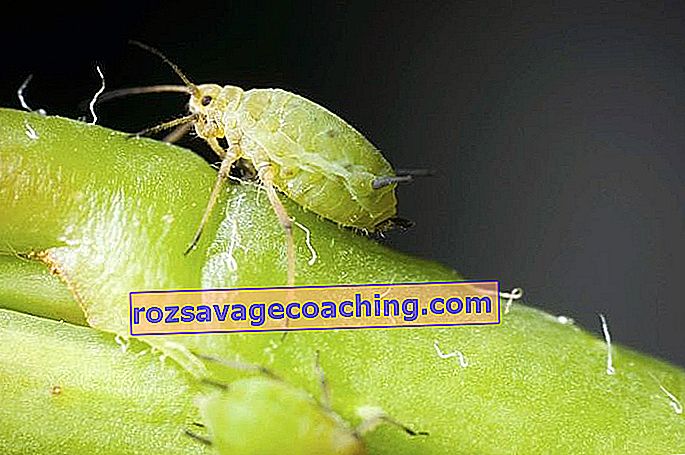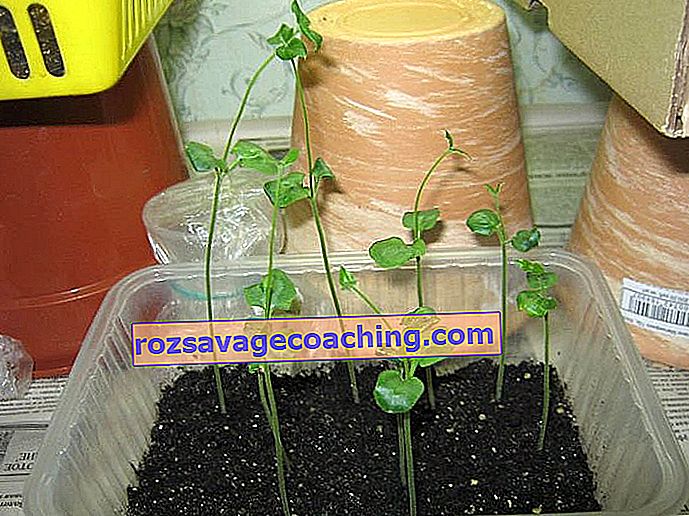
Indoor culture catharanthus is a spectacular flowering bush from the warm islands of the Mediterranean, bringing a special atmosphere to the house. From Greek Catharanthus can be translated as "pure, flawless". Our material describes in detail the methods of reproduction, the features of care, the maintenance of the culture in the apartment, wintering and methods of dealing with various diseases and pests. Most gardeners call the catharanthus the "king of flowers" because of the year-round long flowering and minimal care after planting.
What it is?
Catharanthus is a herbaceous evergreen plant from the Apocynaceae family. In natural areas, the catharanthus is found everywhere in countries with a warm climate and abundant rainfall - Indonesia, Cuba, Java and others. The real place of origin of the flower cannot be determined, most scientists are inclined to believe that the culture originally grew in Madagascar: it is on this island that the population of catharanthus is the most extensive, there are about 8 species of flowers.






In the subtropical region, the catharanthus is able to reach one and a half meters in height. In indoor conditions, the maximum height of the bush is 60 cm. As a home flower, it is grown as an annual and has been bred since the middle of the 18th century. Another name for the culture is periwinkle, which is fundamentally incorrect. Both plants are outwardly similar to each other and previously belonged to the same family. In 1937, the scientific community attributed the pink catharanthus to a separate genus.

Description of culture
An upright bush, with dense, thick stems, a branched crown, the shoots are lignified. The root system is developed, pivotal. The central root grows up to 30 meters in length, has many lateral processes, with a specific smell. There are no root hairs on young roots.
The leaf plates are oblong, pointed, glossy, of a rich green hue; the longitudinal vein is colored in a light range.

After the formation of flower ovaries, the bush is abundantly covered with wheel-shaped buds. The flowers of the culture reach 5 cm in diameter, regular in shape, formed from 5 petals, the corolla is flat, the core is covered with thyroid hairs. In the middle of the bud there is a “eye” of a contrasting shade. In hybrids, the color spectrum of the "eye" starts from white, ending with a violet tone with a bluish tint. Catharanthus buds are similar to phlox flowers, but in the latter they are collected in inflorescences.

During the formation of flower ovaries - from early spring to mid-autumn - a lush cloud of future buds is formed, which makes the plant even more decorative and attracts the attention of gardeners. The end of flowering occurs at the time of the appearance of frost. At the end of the life of flowers, fruits are tied - sickle-shaped double leaves. Inside each fruit there are 10 oblong seeds.

The healing properties of the flower
Important! The plant is poisonous! It is forbidden to make your own medicines! If the substances prepared from catharanthus are used improperly, unpleasant sensations will arise: allergic reactions, burns of varying severity. The use of preparations based on plant parts is possible only under the supervision of a doctor!

Indonesian healers use the plant to treat coughs and tumors. The leaves and shoots of the culture contain alkaloids. Modern research proves the content of active substances that can lower blood sugar levels. Vinblastine, vincristine - substances used in drugs to fight cancer. The green mass of the culture is used for the manufacture of tinctures with wound healing properties, it is used for gum diseases, ulcers, diseases of the pulmonary tract, and hypertension.

Popular species and varieties
The known varieties and hybrids of the plant are a variety of one species - pink catharanthus. Plants differ in size, bush shape, color of bud petals, there are terry varieties. A periwinkle with lilac and pinkish flowers looks like a catharanthus, therefore, before buying, you should carefully examine the plant for the presence of characteristic features inherent only in the catharanthus.

"Aristocrat"
A lush bush, not exceeding half a meter in height, with large flowers. The petals of the bud are colored from white to purple-red. The core of the flower is of a contrasting shade. Katarantus "Aristocrat" is grown as a garden, home culture. Ideal for decorating street paths, flowerpots, landscaping parks and so on.

"Pacific"
Small bush (30 cm), crown diameter almost equal to the height of the crop. The peculiarity of the variety is early flowering, ease of care. The buds are large, the throat is bright. Depending on the color palette, the variety is subdivided into varieties.
- "Burgundy" - wine, purple petals, white throat.
- "White" - white buds with a red center.
- "Epricot" - apricot-colored buds, red eye.
- Ice Pink - pastel pink buds with a red heart.
- "Cooler" is a series of strongly branching crops of half a meter height. The buds are round, large. Varieties: "Grape Cooler" - lavender-pink petals, red heart; "Pepermint" - white buds with a bright red center; "Red Cooler" - buds of a solid red hue.





"First Kiss"
Another variety of small crops, with a color palette of 13 shades. It is considered the most popular of the series. In North America, the First Kiss has won the highest awards. First Kiss Blueberry is distinguished by blue-violet buds.


"Cascade"
The series is represented by ampelous crops, with a bush height of about 15 cm and long hanging shoots with large flowers.
Most popular varieties.
- "Titan" - the length of the lashes reaches 75 cm. The buds are bright red, the foliage is green, glossy. Suitable for growing in hanging containers.
- "Titan White" - snow-white buds.
- Deep Rose is a pink shade.
- Variety "Bark cascade" has several plants with the most spectacular flowers:
- "Cherry Bark" - cherry-toned petals;
- "Bark Polka Dot" - white buds;
- "Cora Magenta" - flowers are painted in lilac-burgundy tones.
- Mediterranean is a short plant with small flowers and long shoots. It develops well and quickly fills the planting tank, easily tolerates drought.







"Black cherry tattoo"
A culture with long-lived buds of unusual color, moving from one gamut to another. The bud petals have a luminescent effect. The bush is dense, the internodes are short. Tatu Black Cherry is capable of growing in dry, dry climates.

"Sunstorm parple"

Katarantus 25 cm high. The buds are medium, purple and purple in color. Suitable for pots, tubs, planting in an open substrate. Blooms profusely.
"Hitwave"
A short plant with buds 5 cm in diameter. Suitable for planting in closed containers, open ground, requires a sunny location. Blooms in the year of sowing. The petals are painted in cherry and white shades.



"Casanova"
The main feature of culture is the ability to bloom profusely in super-hot conditions. The plant is short and branched. Growing rapidly. The color of the buds is red, the foliage is glossy.

"Papaya tattoo"
An annual with a unique color of petals - pale red-pink, with peach tint and black throat.

"Sirtaki"
A low-growing bush, the shoots of the culture are covered with white, pink, dark pink medium-sized buds. Heat-loving, prefers a sunny place. Used in group plantings, rabatki. Perfect for growing in apartments, like a perennial.


Home care
Growing a flower in an apartment is not difficult, but it requires compliance with the rules that allow you to enhance the growth and branching of the culture, the duration of flowering.

The plant is poisonous, all manipulations with it should be performed in protective clothing and gloves, in order to avoid poisoning and the occurrence of allergic reactions.
Humidity, watering
Indoor catharanthus is a moisture-loving culture. The abundance of flowering depends on the level of humidity of the environment and soil: the higher it is, the more abundantly the plant blooms. At low humidity, it is necessary to spray the plant twice a day or place a container with liquid, a humidifier; as an option - put the container with the flower on a plate with wet stones. It is recommended to wet the leaves with a cloth and warm water.

The plant should be watered as the top layer of the substrate dries. Excessive waterlogging of the soil leads to the development of infections, fungal diseases, and attracts pests. The pot must have drainage holes and drainage soil. Drying out of the roots can lead to the death of the catharanthus; short-term drying out of the soil will not do much harm to the culture.

With insufficient moisture, the leaf plates curl. Watering in colder months is reduced to 1-2 times per month.
Lighting
The culture requires diffused light. Location on the western, eastern windows is a priority. The south window should be shaded at midday. The Katarantus can be placed in a meter proximity to the light source, in the back of the room, provided there is sufficient illumination or the presence of a phyto-lamp. The plant feels comfortable in hanging containers, on shelves in a weak shade. In the winter season, the culture should receive diffused light, otherwise the shoots will stretch out, due to which the decorative effect of the flower is lost.


Temperature regime
Ideal conditions for culture are a lit place with an air temperature of + 20-25 degrees in the summer season, in spring. In the cold season, the air should not be below +15 degrees, it is advisable to protect the plant from the heating system and low humidity. The plant will tolerate a short-term drop in temperature to +10 degrees.

The correct temperature affects the duration and abundance of flowering crops. When the air warms up to +18, it is recommended to put the plant outdoors, in a place protected from wind, precipitation: terraces, verandas, balconies. With the first cold snap, the flower is brought back into the room - usually this is the beginning of September.

Fertilizers, soil
Catharanthus needs a fertile, airy substrate. You can plant a crop in a purchased earthen mixture of flowering crops. Another option is to make up the soil from sod land with the addition of peat, washed sand.
To maintain flowering, the plant should be fertilized monthly with special liquid or granular fertilizers containing large amounts of phosphorus and potassium. Nitrogen-containing preparations are used during the growing season. Top dressing is intensive, applied every week to a wet soil mixture. Funds for flowering crops, roses are suitable as nutrient liquids.



If the crop is grown as a perennial plant, the frequency of nutrient introduction is reduced to 1 time in two weeks, the diluted fertilizer dose is lower than stated by the manufacturer.

After the flowering period, the plant should be fertilized even less often, by winter it should be completely reduced.
Pot selection
The culture belongs to fast-growing plants. Planting a bush in a small container will require frequent replacement of the planting containers, as the roots develop quickly. The container for the catharanthus must be necessarily high, but narrow, since the culture has a taproot system. A drain hole is required. At the bottom of the container, there is a drainage from crumbs, pebbles, bricks or other coarse materials.



The annual transplant of the catharanthus is carried out in containers larger than the previous one, by an average of 4 cm. Several pieces of catharanthus are allowed to be placed in one pot, provided that it is wide and high enough - vases, tubs, boxes are suitable.
A distance of 30 cm should be maintained between the bushes to avoid thickening of the planting, leading to difficulties in caring for the crop, especially if the plant becomes sick.



Trimming and shaping
The formation of an indoor flower is a mandatory procedure. In perennials, after a dormant period, the stems are shortened by a third of the length to give splendor to the bush, and abundant subsequent flowering. Dead and damaged parts of the plant, dried leaves, shoots are necessarily removed. Pruning in the first month of spring rejuvenates the crop by making it easier to build up green mass.

A compact crown is formed by pinching new shoots. The upward growth of stems stops, stimulating the development of lateral buds located in the axils of the leaf plates. During the period of opened buds, the culture should be monitored: in time, remove faded buds, yellowed leaf plates, stems.


After three years, the flower "fizzles out", the buds become smaller, the shoots are deformed. The old bush needs rejuvenation.
Transfer
It is recommended to transplant Katarantus by the transshipment method while preserving the braided soil coma. Plants are reloaded in the spring, before the onset of the growing season, or when the central root becomes visible from the drainage hole.
If strange damages, growths, or an unpleasant odor appear on the roots, the plant should be freed from the soil, pre-watered several times, and the damaged roots should be treated, the infected areas should be removed. Plant the culture in a container with new soil, do not water the first two days.

If the substrate is different from the one in which the plant originally grew, this can provoke a lack of flowering. For a catharanthus, a neutral, slightly acidic earth is suitable. It is recommended to pour alkaline soil mixtures with water with the addition of lemon juice or other acidic reagent. Lime is added to the acidified substrate.
Wintering
Outdoor crops, home flowers need wintering. Catharanthus grown in the garden, in the country, should be transplanted into temporary planting tanks by the transshipment method and sent for a dormant period in a warm room. It is advisable to sprinkle the top layer of soil with sand. The plant remains in this form until the onset of warming. In warm, stable weather, it returns to its original place.



Outdoor planting
Planting crops in the open ground of a garden or vegetable garden is carried out only through seedlings. Young catharanthus are tender and react sharply to a drop in temperature, therefore, seedlings are placed in a flower bed in the last months of spring, when the temperature regime becomes stable and no frosts are observed.



When choosing a place for a future flower, it should be borne in mind that the catharanthus is picky about the wind and prefers lighter areas. It is not recommended to plant seedlings in the shade: the plant will begin to stretch, stop blooming and lose its decorative effect. Young crops can be planted in hanging pots if they are ampelous or low varieties. The rest of the varieties look good in group plantings, when the catharanthus is placed in the foreground. You can grow catharanthus in the open field immediately from seeds, but it is recommended to use seedlings.


Humus is placed at the bottom of the planting pits, sprinkling the plant with a loose substrate. A distance of 30 cm is maintained between each bush. If the seedlings were grown in a group in one container, then they are planted without dividing the bush, as is. The root system of the shoots is easily intertwined, when the young are dividing, the roots will be damaged, which will lead to the death of the plants.
For easy extraction of the culture from the pot and convenient transplantation, the container with the flower is watered in advance. The planted bushes are sprinkled with mulch and watered.

In landscape design, catharanthus are planted on flower slides, creating bright "carpets". For these purposes, annual crops, perennials, varieties that easily tolerate bad weather are used.
Fighting disease
When a disease occurs, the catharanthus sheds leaves, parts of the plant are covered with a coating of various shades or are affected by flying insects.
Types of cultural diseases and how to deal with them.

Leaf rust
It is manifested by the appearance of brown dots, tubercles on the surface of the leaf plate or its back. The cause of rust is the flooded earth with a simultaneous high humidity of the air, transplanting the plant into an infected soil mixture.
How to cure: it is recommended to spill the substrate with a liquid containing fungicides or transplant it into completely new soil. Remove the affected areas of the culture to healthy tissues, treat the wounds with healing preparations.

General lethargy of the plant
Drooping foliage, yellowing and dropping of leaf plates, buds are associated with an excess of direct sunlight, hot air. It is recommended to shade the plant or move the pot to a shaded place. The yellowing of the tips of the foliage of the catharanthus occurs due to low humidity. It is worth installing an additional source of water or increasing the number of sprays of the plant, arranging once a week for the flower to bathe in warm water to protect the earthy coma from waterlogging.

The yellowing and drying of the lower leaves on the trunk of the plant is a natural process, not caused by any disease.
Poor flowering
Most often caused by hypothermia of the plant. The culture container should be placed in a warmer place with sufficient sunlight.
If the leaves turn yellow during flowering, you should carefully examine the catharanthus. The cause of the disease, perhaps, lies in the lack of land and the small size of the pot.

The shedding of buds occurs from a lack of nutrients in the soil, with a short daylight hours, a lack of moisture in the substrate or air.
The upper shoots shed young leaves, the reason is rare watering of the plant, low ambient temperature, the presence of insect pests.
Insects
Most often, the catharanthus is eaten by aphids, whiteflies, scale insects and spider mites. These pests suck the juice from the soft parts of the plant, leave traces of vital activity on the surface of leaves and shoots in the form of honeydew, cobwebs, softened pits, or other injuries.
Insects enter plants during spring and summer, carried by the wind from other plants, directly through a new flower. At this time, it is worth checking the culture regularly.

Shield
Small brown insects, similar to ladybirds. Cover the inner parts of the plant, stems, multiply rapidly. The first sign of scab infection is a sticky coating, wet spots are insect bites. With extensive lesions, the scale covers the entire plant - from the root collar to the apical shoots. The plant dies quickly, without external signs of wilting.

Aphid
It leads to the formation of chlorosis, the leaves of the culture wither, dry, the buds do not open. The waste products of aphids cause the development of a sooty fungus.

Spider mite
Forms a fluffy coating, a cobweb on the leaves and trunks of the plant. Covers the inside of the sheet. Easily infects neighboring crops. On parts of the plant, small white rounds are distinguishable - insect eggs. The ticks themselves are colored brown, green or orange. If a cobweb is found on a plant, immediate processing of the culture is required.

Whitefly
Miniature white butterflies feeding on plant sap. All parts of the flower are affected, leaving yellowish spots behind. With a strong insect infestation, the leaf plates of the culture dry up, deform; the buds and the whole plant wither. When you touch the flower, flocks of flying insects are noticeable. The whitefly quickly spreads to neighboring crops, increasing its numbers. If a pest is found, urgent treatment of all plants is necessary.

Miners
The leaf plates are covered with yellow holes, over time, light patterns become visible - the pest moves. Pupae of miners are brown, ripen on leaves, then fall to the soil to go through the next phase of development.


How to deal: when buying a flower or seedlings, you need to carefully examine the plant. Infected crops are removed cleanly with a complete soil replacement. With a small source of infection, flowers are treated with Aktellik, Fufanon or Karbofos.
Slugs
Oblong holes are formed on the leaf plates and buds. Slugs do not cause significant harm to the plant, they only spoil the appearance.Prevention: the surface of the soil is treated with lime or superphosphates until slugs appear. Traps are recommended. For severe damage, use metaldehyde.

Wrestling
In case of creeping white, red small insects, fluffy plaque, the plant should be completely washed with soapy water, remove the remaining pests by hand, replace the top layer of soil. Quarantine Katarantus. Treat with special preparations in several passes.

When the disease is started, all the affected parts of the plant are removed, the earth is moistened with insecticidal preparations "Aktara", "Fitoverm" or "Aktellik". Processing is carried out several times at intervals of 10 days.

How to reproduce?
Despite the fact that catharanthus is a perennial plant, after several years of life, the decorative effect of the bush begins to decrease, flowering becomes more scarce. In this case, it is required to propagate the mother plant by cuttings or by dividing the bush.

Cuttings
Apical shoots with 4-6 developed leaves act as cuttings. The fragments take root in water or soil. All leaves are trimmed in half to reduce photosynthesis so that the plant can use all its strength to build roots.The liquid in which the cutting is placed must be clean, settled, boiled with the addition of the root growth stimulator "Kornevin". A glass with a fragment is placed in a bright, warm place. Water should be periodically changed to fresh water, adding liquid to the previous level. The stalk should remain motionless all the time, it is advisable not to touch the part of the plant placed in the water. The future plant is fixed with a piece of paper or sticks. Callus formation occurs after a week or two. From this nutrient medium, plant roots will appear in the future.

When the root system reaches 3-5 cm in length, the cutting is ready for transplantation into a container with a loose substrate without greenhouse conditions. The sprout should be watered carefully and little by little, the first planting container should not be large - a plastic cup will do.
Rooting in the ground
The finished fragment with clipped leaves is placed in prepared soil with the obligatory addition of sand or in a peat tablet. The container with the handle is covered with a plastic transparent cup or bag, the container is placed in a bright, warm place. A greenhouse with a shank should be periodically ventilated to remove excess condensation, and the soil should be sprayed. The plant should be carefully watered - due to the lack of roots, the soil mixture can be easily turned into a swamp.
When the first signs of growth appear, the plant gradually begins to "accustom" to life without a greenhouse, increasing the airing time.

It is desirable to harvest and plant cuttings with a margin, in the spring or fall. The optimum temperature for rooting fragments is + 22-25 degrees.
Reproduction by dividing the bush
This method is applied during the transplantation of the mother plant in the spring. The number of flower divisions depends on how developed the root system of an adult culture is - most often the culture can be divided into two, three self-sufficient plants.
Before dividing, the soil must be watered abundantly, after a few hours, remove the plant from the container and clean the root system of the earthen mixture. Decide on the place of division of the roots. Cut the selected section with a scalpel, knife or secateurs. Any tool must be sharp and sterile so that the plant does not become infected with infectious diseases.

Treat the wounds with healing resin ointments or crushed coal. Place the resulting bushes in individual containers of a suitable size. The first days of the culture should not be watered - just spray and slightly moisten the top layer of the substrate.
To accelerate adaptation, it is recommended to treat the catharanthus with a tonic preparation "Epin", which reduces the stress level of the plant and improves its immune parameters.
Growing from seeds
This method is used by breeders to obtain new varieties or when growing new crops, propagating an old plant. Seeds obtained from an indoor flower will not have time to ripen during the summer season, therefore it is recommended to use purchased material.
If the goal is to get seeds from an existing plant, then you should be patient and carefully look after the catharanthus. If all conditions are met, the seeds will ripen in the spring month.

Sowing of the material takes place all year round. The flowering period of the culture falls on the 70th day from the moment the seed emerges. Therefore, it is recommended to sow in spring, starting in March.

Seeds should be treated with potassium permanganate or Epin and placed in prepared seedling soil at a depth of 10 mm. Moisten the ground slightly with warm water and cover the containers with glass. The structure is placed in a warm, dark place.
A week later, the first shoots will appear. From this moment on, the container with the seedlings is placed in a bright room with access to diffused light, with an ambient temperature of +24 degrees. All the time, the sprouts must be ventilated and periodically moistened.

After a month, three pairs of true leaves are formed on each sprout, on the fourth pair, the plants are picked into individual containers. The growth of young catharanthus is rapid, so large deep containers can be used. The soil for young animals should be peat, turf and sand. Proportions 1: 1: 1. Ready potting mix is suitable for flowering plants.

Florist tips
If the plant cannot acclimatize in an open substrate for a long time, it is recommended to transplant it into a container and keep it at home. The reason for this behavior may be the choice of an unsuitable variety - not all types of catharanthus take root in open areas.
Some beliefs are associated with the name of the catharanthus:
it is believed that flowers preserve youth and protect the home from evil spirits, intentions;
flower helps to resolve quarrels in the family.

Ampel crops are used as a flower fence. Plant boxes are placed on the top of the fence from the inside. The hanging whips of the flower remain intact or are fixed with a net, various holders in a variety of colorful patterns.
It is not recommended to keep the flower in apartments where there are small children and animals.